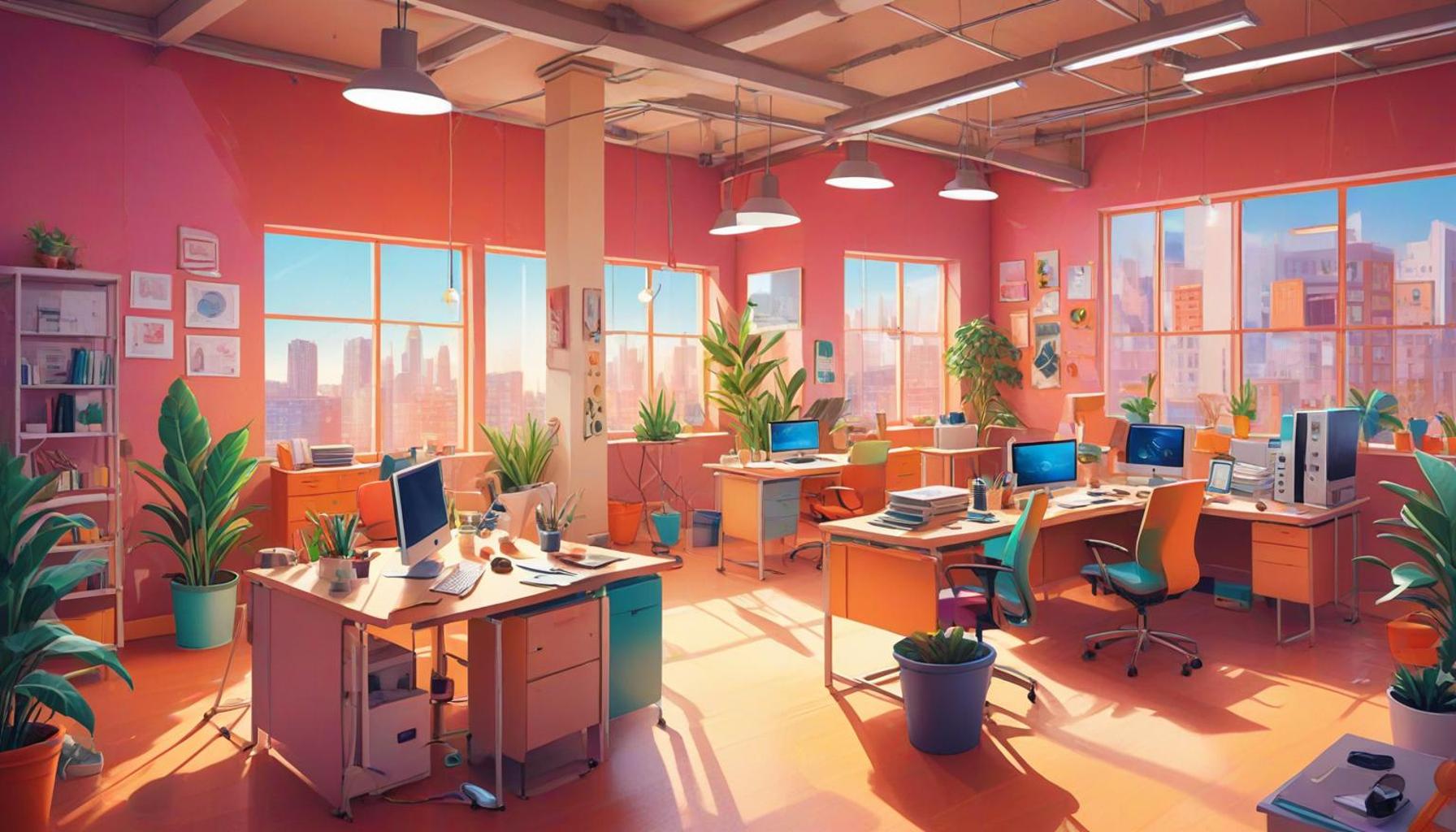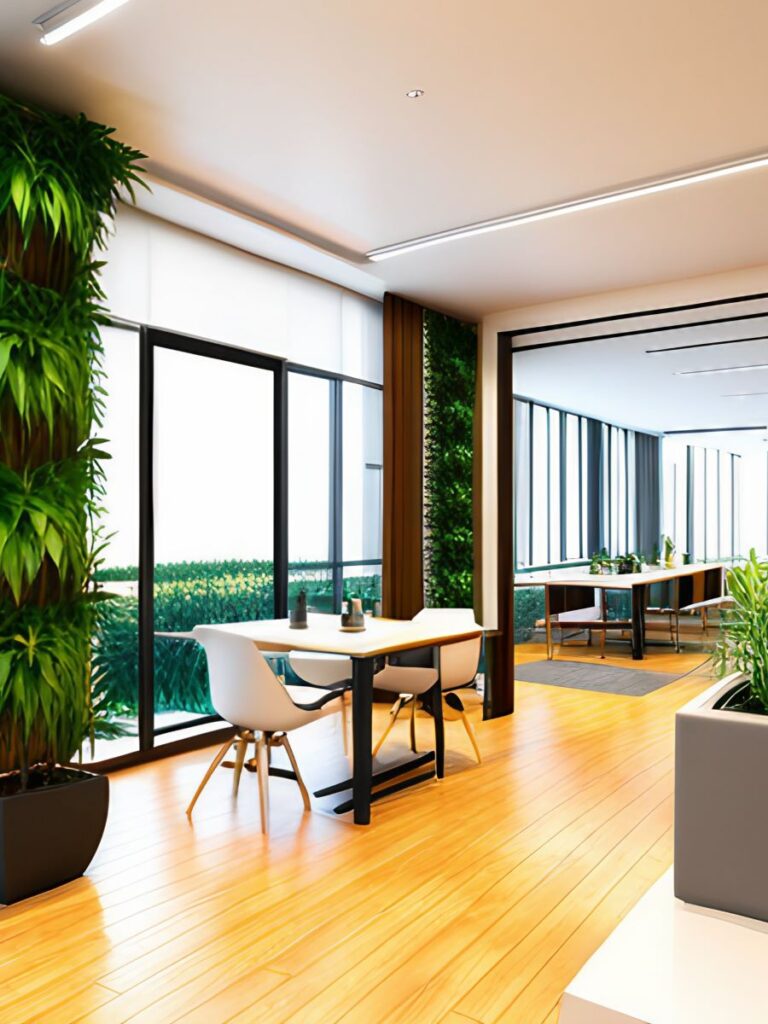Intentional Property in Work Environments: Optimizing Spaces to Increase Productivity

Creating Purposeful Workspaces
The design of our work environments significantly influences productivity levels in a wide variety of industries. By prioritizing intentional property, companies can transform their workspaces into dynamic hubs of innovation and efficiency. A meticulously planned arrangement of design elements not only enhances employee engagement but also directly correlates with increased work output.
Why Intentional Property Matters
When optimizing spaces, it’s essential to consider multiple factors that impact productivity:
- Layout: The decision to use open floor plans has become increasingly popular, as this layout fosters collaboration among teams. However, without designated quiet zones, such plans may simultaneously lead to distractions and diminished focus. For instance, tech companies like Google have implemented various collaborative zones within their offices, allowing employees to shift seamlessly between teamwork and concentrated work.
- Ergonomics: Investing in comfortable furniture and proper equipment is not merely a luxury; it is a necessity for heightened productivity. Ergonomic chairs and adjustable desks can significantly reduce physical strain, enabling employees to dedicate more mental energy to their tasks. A study from the University of North Carolina found that ergonomic improvements can reduce absenteeism by up to 50%.
- Lighting: Natural light is another critical element in workspace design. Research reveals that exposure to daylight boosts mood and energy levels, which is vital for sustained concentration. An intriguing study published by the Journal of Clinical Sleep Medicine found that employees working in environments with ample natural light reported higher quality sleep, ultimately impacting their daytime productivity.
Moreover, incorporating elements like greenery and personal decorations can cultivate a more inviting atmosphere, fostering a sense of belonging and comfort among employees. Companies that encourage employees to personalize their workspaces often see higher retention rates. In today’s rapidly changing work landscape, understanding how to optimize our environments is essential.
Exploring the Impact
The correlation between intentional workspace designs and productivity is well-documented. Statistics illustrate this phenomenon compellingly:
- Organizations that prioritize workplace design experience a remarkable 20% improvement in employee output, showcasing how well-designed spaces can translate directly into efficiency.
- Moreover, employees who are encouraged to personalize their office areas often report 30% higher job satisfaction, indicating that a personal touch can raise morale and engagement levels.
- Interestingly, green office environments have been shown to enhance cognitive function by an impressive 15%, underlining the profound effects that natural elements can have on mental acuity and creativity.
Delving deeper into the art and science of workspace optimization unveils invaluable insights that could redefine the future of workplace productivity. As organizations increasingly adapt to evolving work practices, the need for intentional, thoughtfully designed workspaces becomes paramount for success and employee happiness.

DISCOVER MORE: Click here for minimalist organization strategies
Strategic Space Utilization
To effectively harness the potential of intentional property, organizations must adopt strategic space utilization concepts that prioritize functionality and employee well-being. Every square foot of an office represents not just a physical area but an opportunity to inspire creativity, foster collaboration, and boost productivity. To create these conducive environments, several design principles emerge as vital:
- Flexible Workspaces: The modern workforce thrives on flexibility, and incorporating movable furniture and adaptable common spaces is critical. This can include modular seating arrangements that cater to both individual tasks and collaborative projects. Companies like WeWork have pioneered flexible workspaces, allowing employees to reconfigure their surroundings based on current needs, which leads to enhanced creativity and teamwork.
- Noisy Zones vs. Quiet Areas: Recognizing the varying noise levels that come with different tasks is essential. Designing spaces to include both dynamic, interactive zones as well as isolated quiet areas can help cater to diverse work styles. For example, open meeting areas encourage lively debate, while soundproof pods can provide an escape for those who require deep focus.
- Tech Integration: Modern workspaces must incorporate the latest technology to streamline processes. From video conferencing facilities to interactive whiteboards, integrating technology into the workspace design not only enhances productivity but also mitigates communication barriers that can exist in hybrid work settings. Research indicates that companies leveraging advanced technology observe an uptick in project completion rates by nearly 25% compared to those lagging in tech adaptation.
When designing these spaces, organizations should also emphasize the importance of leisure and relaxation areas. Break rooms or lounges featuring comfortable seating and recreational activities foster a balanced work culture and can rejuvenate employees. Research from the University of Michigan found that short, purposeful breaks can lead to heightened productivity—up to 13% in some cases—illustrating how intentional space can directly impact work efficiency.
Incorporating Culture and Branding
The architectural choices made in workspace design also play a crucial role in reflecting company culture and values. Employees who feel connected to their organization through the physical environment tend to demonstrate increased engagement and loyalty. Here are some key considerations:
- Visual Branding: Use colors, logos, and design motifs that resonate with the organization’s identity. This not only promotes staff unity but also helps in attracting clients and partners who share similar values and aesthetics.
- Community Spaces: Incorporating areas that allow employees to unwind or mingle is vital. Such spaces can foster informal exchanges of ideas that may lead to innovation. For instance, the incorporation of cafés and recreational areas can break down hierarchical barriers and encourage idea-sharing.
- Art and Inspiration: Artwork and inspirational quotes displayed within the workspace can stimulate creativity and motivation. Investing in local artists to create murals or sculptures can also enhance community ties and support local economies.
Ultimately, the intentional design of work environments goes beyond aesthetics—it’s about creating spaces that enhance well-being, encourage collaboration, and align with organizational goals. The next step involves delving into specific case studies illustrating successful implementations of these principles, shedding light on how intentional property can elevate productivity across various sectors.
Understanding the Impact of Intentional Property Design
Intentional property design in work environments isn’t just a trend; it’s a necessity for improving employee productivity. By optimizing office spaces with a focus on functionality and comfort, companies can ensure that their workforce remains engaged and highly productive. The layout, color schemes, and even furniture selection play a crucial role in shaping an employee’s day-to-day experience.
For instance, incorporating natural light into office spaces has been proven to enhance mood and reduce eye strain, leading to greater overall satisfaction among employees. Similarly, the arrangement of workspaces can encourage collaboration or, conversely, offer quiet areas for concentrated work. An understanding of human-centric design principles is vital in achieving this balance.
Moreover, the concept of flexible workstations has gained popularity, especially in the wake of remote working trends. By allowing employees to choose their workspace, whether it’s a focused desk area or a collaborative lounge, organizations can drive higher productivity. Adaptable environments also empower employees, providing them with a sense of control over their workspaces, which can be highly motivating.
Furthermore, the benefits of intentional property extend beyond physical spaces. Companies that invest in optimizing work environments often see decreased employee turnover rates. A thoughtfully designed workplace reflects the organization’s values and commitment to employee well-being, fostering loyalty and job satisfaction. When employees feel valued in their physical surroundings, they are likely to demonstrate increased dedication to their work.
The key takeaway is that intentional property design is not merely about aesthetics but about creating an atmosphere conducive to productivity and employee well-being. For those considering improvements in their work environments, adopting innovative design strategies can yield significant returns, both in productivity and employee satisfaction.
| Advantages | Impact |
|---|---|
| Enhanced Employee Well-Being | Boosts morale and reduces stress levels. |
| Increased Collaboration | Encourages teamwork and idea sharing. |
DISCOVER MORE: Click here for valuable tips on organizing your space
Tailoring Spaces for Diverse Work Styles
In the quest for maximizing productivity, creating intentional property in work environments means recognizing and accommodating the diverse work styles of employees. A one-size-fits-all approach invariably leads to disengagement and inefficiency. Instead, organizations must provide a variety of work settings conducive to the unique preferences and needs of their teams. Here are key strategies for crafting these tailored environments:
- Designated Team Zones: Allocating specific areas for teams—based on their workflows and tasks—allows for synergy and cohesion. For example, agile teams might benefit from shared huddle spaces featuring whiteboards and screens for brainstorming sessions, while project-based groups may require areas with more privacy to delve deep into complex assignments. A case study by LinkedIn revealed that companies fostering team-oriented spaces experienced a 15% increase in project completion rates due to enhanced collaboration.
- Cozy Nooks and Collaboration Corners: Beyond traditional office setups, incorporating cozy nooks with comfortable seating can encourage informal gatherings. These areas can stimulate spontaneous discussions that lead to innovation, as employees feel more relaxed in low-pressure environments. Design features such as plants, ambient lighting, and soft furnishings will elevate these spaces, making them inviting for team collaborations and creative thinking.
- Adjustable Workstations: The rise of remote work has spotlighted the need for ergonomic and adjustable workstations that cater to both in-house and remote employees. Allowing customization—such as height-adjustable desks and variable seating options—encourages movement and physical well-being, reducing fatigue. A report from the Bureau of Labor Statistics found that over 60% of employees feel more engaged when they have control over their workspace setup.
Furthermore, intentional designs should integrate natural elements and ensure good air quality and lighting. Biophilic design—the practice of incorporating nature into the workspace—has been shown to lower stress levels while enhancing cognitive performance. Companies like Google have successfully integrated green walls and plant-filled common areas, resulting in a more invigorating atmosphere that promotes employee wellness and focus.
Enhancing Employee Engagement Through Space
Creating an intentional property in work environments is also tied to fostering employee engagement. When employees feel that their workspaces reflect their values and personalities, it cultivates a sense of belonging. Several innovative approaches can be implemented:
- Personalizable Spaces: Giving employees the freedom to personalize their workspace allows them to express individuality. This can take the form of personal items, photos, or plants, which can be beneficial for morale and create a sense of ownership over their environment.
- Community Engagement Initiatives: Organizations can benefit from hosting community events or workshops within the workspace. These initiatives not only utilize physical space effectively but also strengthen team dynamics and promote collaboration. Studies reveal that companies that invest in community-building have lower turnover rates, showcasing a direct correlation between space optimization and employee retention.
- Sustainable Practices: Incorporating sustainability into workspace designs resonates well, particularly with the millennial and Gen Z workforce, who highly value eco-conscious practices. Utilizing recycled materials and energy-efficient systems can enhance the office’s appeal while aligning with the sustainability values of modern employees. A survey published by Deloitte in 2021 indicated that companies emphasizing sustainability reported a 23% increase in employee satisfaction.
In summary, optimizing work environments through intentional property design is a multifaceted approach that considers individual preferences, promotes engagement, and aligns with company values, leading to enhanced productivity and morale. Exploring the intriguing intersection of workplace design and technology will further reveal the untapped potential of these intentional spaces.
DISCOVER MORE: Click here to unlock design secrets for small spaces
Conclusion: The Future of Workspaces
In a rapidly evolving work landscape, the concept of intentional property has emerged as a pivotal strategy for enhancing employee productivity and satisfaction. By recognizing the multifaceted nature of individual work styles and preferences, organizations can strategically design environments that foster creativity, collaboration, and overall engagement. Tailoring spaces—ranging from designated team zones to personalizable workstations—enables a harmonious balance between collaborative efforts and individual tasks, thus driving effective workflows.
The positive correlation between innovative workspace design and productivity cannot be overstated. Companies that embrace biophilic design principles and prioritize employee well-being see measurable improvements in engagement metrics. As employees thrive in environments that reflect their values and personalities, organizations witness not just increased morale, but also enhanced creativity and innovation. With studies indicating significant rises in productivity and job satisfaction—such as a 15% increase in project completion rates for team-oriented designs—there is no doubt that these advancements are advantageous.
Looking ahead, organizations must remain committed to continually evolving their spaces in tandem with employee needs and technological advancements. The integration of sustainability practices will also resonate deeply with modern employees, ensuring that companies attract and retain top talent. In essence, by investing thoughtfully in intentional property, organizations are not only optimizing productivity but also sculpting a vibrant corporate culture that champions well-being as a foundational element of success.


